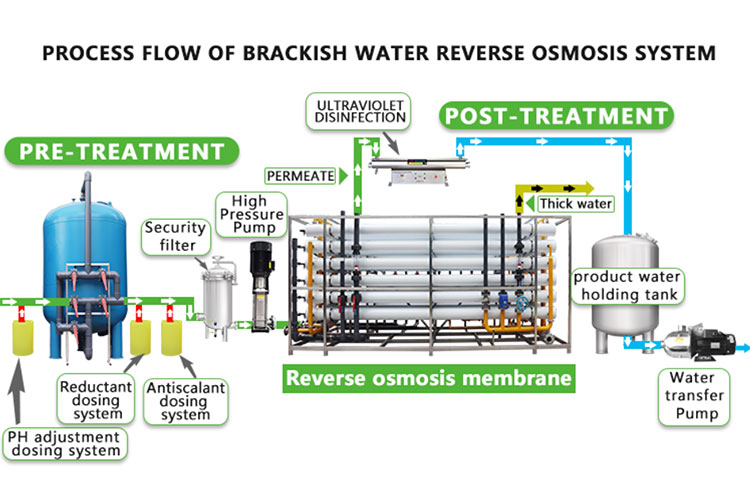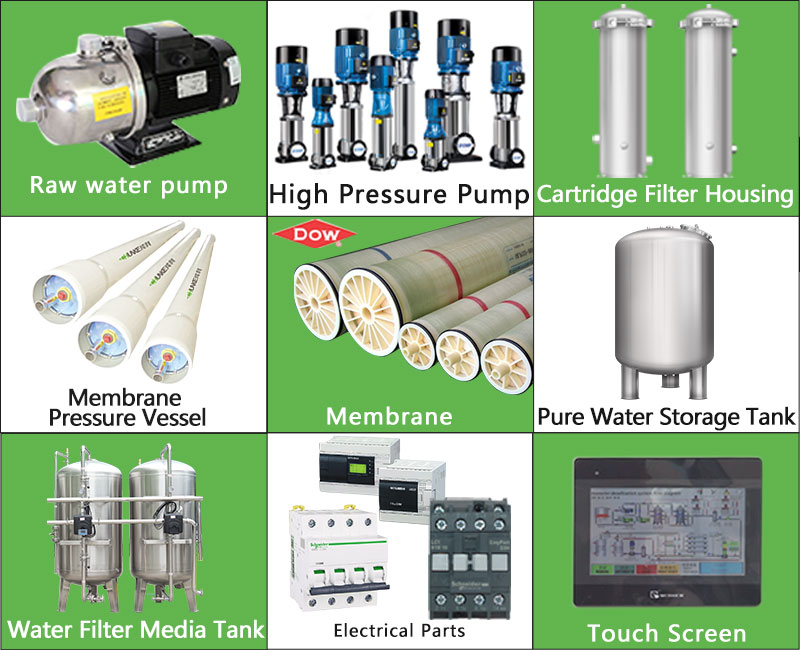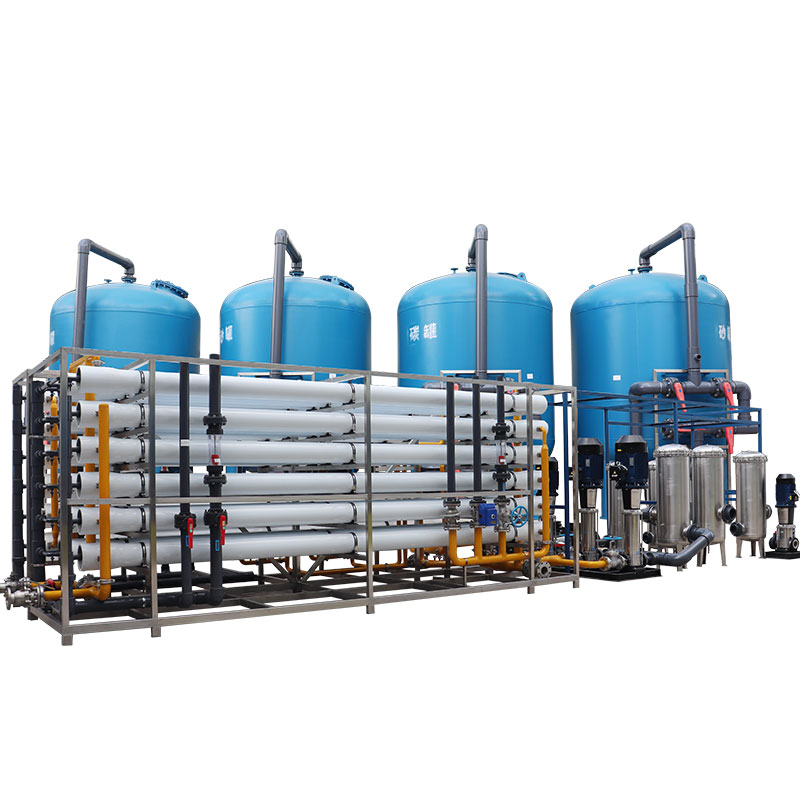Can reverse osmosis systems purify brackish water?
In recent years, with the intensification of global water shortages, how to efficiently use brackish water has become the focus of many countries and regions. As an advanced water treatment technology, reverse osmosis systems are widely used in seawater desalination, brackish water purification and other fields.
So, can reverse osmosis systems effectively purify brackish water? This article will explore this issue in depth and analyze the application prospects and challenges of reverse osmosis technology in brackish water treatment.

What is brackish water?
Brackish water refers to water bodies with a high concentration of dissolved salts, and its salinity is between fresh water and seawater, usually between 1000 and 15000 milligrams per liter (mg/L). Brackish water is widely distributed in coastal areas, inland saline-alkali lands and certain groundwater layers. The water quality is poor, and direct drinking or irrigation will have adverse effects on human health and agricultural production. Therefore, how to efficiently treat and utilize brackish water has become an urgent problem to be solved.
Working principle of reverse osmosis system
The reverse osmosis (RO) system is a water treatment method based on semipermeable membrane separation technology. By applying a pressure higher than the osmotic pressure, water molecules pass through the semipermeable membrane, while dissolved salts, heavy metals, bacteria and organic matter are intercepted, thereby achieving water purification.
● Reverse osmosis membrane: The RO membrane is the core component of the reverse osmosis system. Its pore size is about 0.0001 microns, which can effectively filter almost all dissolved substances.
● Pressurization device: In order to overcome the natural osmotic pressure, the reverse osmosis system requires a high-pressure pump to apply pressure to make water molecules pass through the RO membrane.
● Pretreatment unit: The reverse osmosis system is usually equipped with a pretreatment unit, including sand filtration, activated carbon filtration and microfiltration, to remove large particles, suspended matter and some organic matter, and prevent RO membrane clogging and damage.
How effective is the reverse osmosis system in purifying brackish water?
The reverse osmosis system performs well in the purification of brackish water, and can effectively remove dissolved salts and other pollutants in water, providing high-quality fresh water. The following are the main advantages of reverse osmosis systems for purifying brackish water:
1. Efficient salt removal
The reverse osmosis system can effectively remove more than 99% of dissolved salts in water through the selective permeability of the RO membrane, converting brackish water into fresh water suitable for drinking and irrigation.
2. Wide application
The reverse osmosis system is suitable for the treatment of brackish water with a wide range of salinities, from mild salt water to high-salinity brackish water. The system can flexibly respond to different water quality conditions by adjusting the working pressure and the number of membrane components.
3. Removal of multiple pollutants
In addition to salt, the reverse osmosis system can also remove heavy metals, bacteria, viruses, pesticide residues and organic pollutants in water to provide safe and hygienic drinking water.
4. Stable operation
Modern reverse osmosis systems are mature in design, stable in operation, with advantages such as high degree of automation and simple operation and maintenance, and are suitable for water treatment applications of different scales.

What are the challenges of reverse osmosis systems for purifying brackish water?
Although reverse osmosis systems have significant advantages in purifying brackish water, they still face some challenges and problems in practical applications:
1. Energy consumption
Reverse osmosis systems require high-pressure pumps to provide power, which consumes a lot of energy, especially when treating high-salinity brackish water. How to reduce energy consumption and improve energy efficiency is the focus of current research.
2. Membrane fouling and scaling
Suspended solids, microorganisms and soluble inorganic matter in brackish water are easily deposited on the surface of RO membranes, causing membrane fouling and scaling, affecting system performance and life. Effective pretreatment and membrane cleaning technologies are needed to extend the service life of the membrane.
3. Wastewater treatment
The reverse osmosis process will produce a certain proportion of concentrated wastewater containing high concentrations of salts and pollutants. How to treat and dispose of these wastewaters and reduce the impact on the environment is an important issue in the application of reverse osmosis technology.
4. Economic cost
The initial investment and operation and maintenance costs of the reverse osmosis system are high, especially in large-scale brackish water treatment projects, where economic cost is an important consideration. Reducing costs through technological innovation and economies of scale is the key to future development.

Practical application cases of brackish water purification
1. Brackish water desalination project in Israel
Israel is one of the countries with scarce water resources in the world. Reverse osmosis technology is widely used to desalinate seawater and brackish water. The brackish water desalination project in the Negev Desert area of Israel converts underground brackish water into high-quality drinking water and irrigation water through a reverse osmosis system, which greatly improves the local water resource utilization rate and agricultural productivity.
2. Brackish water treatment plant in California, USA
Groundwater in some parts of California, USA contains high concentrations of salts and pollutants, which affects drinking water safety and agricultural water use. Reverse osmosis brackish water treatment plants have been built in many places in California to purify groundwater through advanced RO systems, provide safe and reliable drinking water, and reduce dependence on surface water resources.
3. Brackish water treatment in coastal cities in China
Coastal cities in China, such as Tianjin and Qingdao, are facing water shortages and water pollution due to industrial development and urbanization. The local government has built a series of reverse osmosis water treatment plants to desalinate brackish groundwater and coastal seawater to ensure the safety of drinking water for urban residents.
Conclusion
As an efficient and reliable water treatment technology, the reverse osmosis system can effectively purify brackish water and provide an important means to solve the global water shortage problem. Despite the challenges of energy consumption, membrane pollution and economic costs, with the continuous advancement of technology, the application of reverse osmosis systems in brackish water purification will become more extensive and in-depth, providing people with safer and purer drinking water.




